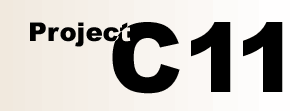
 |
|
|
Project Leaders:
|
Researcher: Research Area:
|
Information: |
||||||||||||
Conceptualisations of landscape and the issue of land ownership play an important role in the history of Namibia. Until today different cultural notions, social practices and historical experiences of the ethnic groups and political parties of Namibia have influenced the debate on the land reform, which has been planned since independence.
For many of the Hereros of Central Namibia the loss of their land through German
colonisation, particularly through the colonial war of 1904 until 1907, has
been a fundamental historical experience. In spite of the loss of land, or perhaps
even for this very reason, Hereros still refer to the land in various cultural
practices. In individual as well as in collective memory experiences of war
and violence dating from that period are tied to specific venues of military
conflict, and are integrated into oral history and oral tradition in a condensed
form, i.e. particularly through place names, year names and so-called praise
songs. This hints at the existence of a topology of war events and experiences
of violence - a historical knowledge that explicitly refers to the landscape(s)
of Central Namibia.
The continuous actualisation of this knowledge in various social practices like
rituals can be understood as a strategy of symbolical re-appropriation of land
and landscape. In this sense landscape is studied not only as a theme underlying
processes of remembering, but it is also considered in its function as 'stage'
(KIRSTEN ALNAES) for practices of commemorating.
Crucial for this study are narrations of history referring to places. Such
narrations bring to light events, scenarios and images from pre-colonial, colonial
and post-colonial times memorised in a verbal form. A focus lies on oral traditions
in the form of praise songs of places and individuals, in which the appropriation
and cultivation, but also the loss of land in (pre-)colonial times are remembered.
Furthermore rituals tied to places are considered. Such rituals can be understood
as public enactments of the symbolical re-appropriation the land. By creating
and maintaining such 'places of memory' (PIERRE NORA; JAN und ALMEIDA ASSMANN),
space, nature and environment are coined into 'landscape'. In this connection
the annual commemoration rituals of Hereros in honour of their heroes from pre-colonial,
colonial and post-colonial times, e.g. the so-called Heroes Day in Okahandja,
but also commemorative rituals on previous battle fields like Ohamakari near
the Waterberg will be considered.
In oral tradition as well as in rituals graves and tombs play a pivotal role:
irremovably spread across land and landscape, they generate a very dense network
of 'places of memory'.
In many cases objects of material culture have been introduced into practices
of remembering. They are used as objectifications and visualisations of symbolical
references into the past. A great part of the project consists of a search and
documentation of relevant objects in German and Namibian collections. This includes
tombs, ritual utensils, uniforms and ceremonial objects occurring in commemorative
rituals. In this context the origin of an important Herero tomb in the collection
of the Vereinigte Evangelische Mission in Wuppertal (Germany) will be ascertained,
and its history will be looked at critically from the point of view of a 'biography
of things' (I. KOPYTOFF). The holdings of the anthropological museums of Köln,
St. Augustin, Bremen, Hamburg, Berlin, München and Zürich, as well
as those of the National Museum in Windhoek and other Namibian collections will
also be included in the study.
Research Area: Landscape between Waterberg and Okakarara
| [Main]
[Project C1] [Project
C8] [Project C10] [Project C11] [Project
C13] |